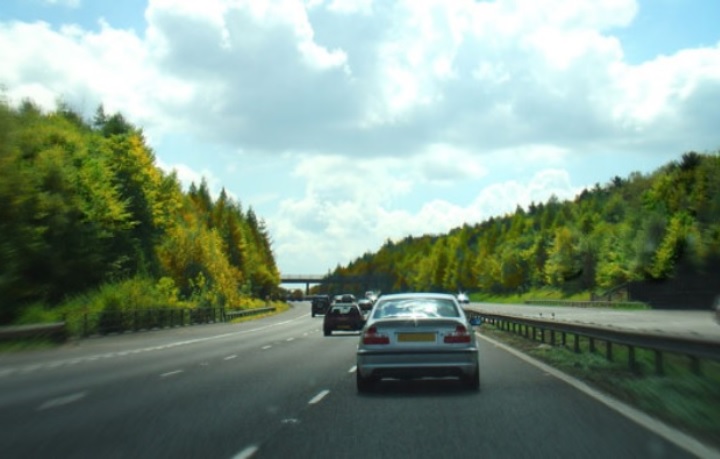
The proportion of cars exceeding the speed limit in free-flowing conditions has remained broadly stable since 2011, the DfT has concluded, after publishing new data for 2019.
The statistics measure speed and compliance at sites where the road conditions are ‘free flowing’ – for example roads with no junctions, hills, sharp bends, speed enforcement cameras or other traffic calming measures.
In 2019, approximately half of cars were found to be exceeding the speed limits on motorways (50%) and 30mph roads (54%). At 9%, the figure was much lower on national speed limit (NSL) single carriageways.
Looking at more extreme incidents of speeding, the proportion of cars exceeding the speed limit by more than 10mph was 12% on motorways, 6% on 30mph roads and 1% on 60mph roads.
The DfT says the statistics provide insights into speeds at which drivers choose to travel when free to do so, but are not estimates of average speeds across the whole network.
It notes that the average car speeds under free flow conditions were close to the speed limit on motorways (69mph) and 30mph roads (31mph) – and under the speed limit on 60mph roads (50mph).
Majority continue to exceed 20mph limits – but extra caution needed
The figures also show that 86% of cars exceeded the speed limit on roads with a 20mph limit – with 20% breaking the limit by more than 10mph.
While these figures may seem alarming, the DfT stresses that free flowing conditions are not typical of most 20mph roads and as a result, must be ‘interpreted with additional caution’.
DfT guidance suggests that 20mph limits are most effective when they have traffic calming measures or when average vehicle speeds are already below 24mph.
There’s a limit as to how much we should accomodate the anti-social and generally poor drivers on our roads.
Hugh Jones, Cheshire
--11
> Do you really propose adjusting a law because people break it
Well, I for one have proposed (and had accepted) the raising of speed limits on that principle before, so yes?
Moreover, are people forgetting the rather high %age of HGVs that were exceeding the previous 40mph limit on single carriageways in England and Wales?
David Weston, Newcastle upon Tyne
+2
Perhaps the 54% could try harder and comply with the 30 speed limits..like the 46% who do?
Hugh Jones, Cheshire
--13
Robert Bolt – Do you really propose adjusting a law because people break it ?
Obviously no possibility of a law on social distancing.
A stronger case could be made that if injury collisions are occurring on a road then limits are too high and need revising downwards.
Paul Luton, Teddington
--3
At the risk of boring everyone, can I re-iterate the well-known fact, that, in general, drivers “choose” speeds which seem appropriate from their reading of the road ahead. The “choice” is not necessarily a conscious one.
Speed cameras are an insult to drivers. As anyone who has troubled to read the relevant research will understand why.
Drivers’ “choices”, however, are not always suitable, and limits other than the 85%ile may have to be imposed.
The only fair way to do this is by the application of mandatory ISA, as TfL has in respect of its buses.
Unfortunately, our caring governments continue to drag their heels on the matter, adding (in Scotland) to the 2000 or so excess deaths which have occurred since 1996 (the disastrous “re-organisation” of local government, which led to the loss of strategic local authorities, capable of dealing with roads and their problems, properly).
So, Paul (below) has a lot to learn, Robert is spot-on, and Hugh likewise.
Although they’d probably be embarrassed to be associated with them, perhaps it’s time we recommended Oliver Carsten & his associates for a Prince Michael award. 🙂 What think ye, chaps?
Fraser Andrew, STIRLING
--2
There does seems to be a fatalistic attitude to dangerous law-breaking.
You see lots of speed indicators giving drivers frowny faces and then nothing.
A whole lot more cameras capable of sending out fines automatically are needed.
Paul Luton, Teddington
--4
Again stating the obvious if 54% of cars are exceeding the 30 limit, then the limit in those places is wrong and needs revising upwards.
Robert Bolt, St Albans
+2
I’m stating the obvious perhaps, but it depends on which roads – within each category- the speeds were actually measured. 54% exceeding a 30 limit is probably the highest you will ever get on such aroad and will probably be from permanent counters set in main routes and not your typical residential/urban 30 limit where compliance is typically very high.
The 60 limit on single c/way roads is the most complied with simply because a lot of these roads are not capable of sustaining this level of speed anyway as they are default speed limits.
Hugh Jones, Cheshire
--8